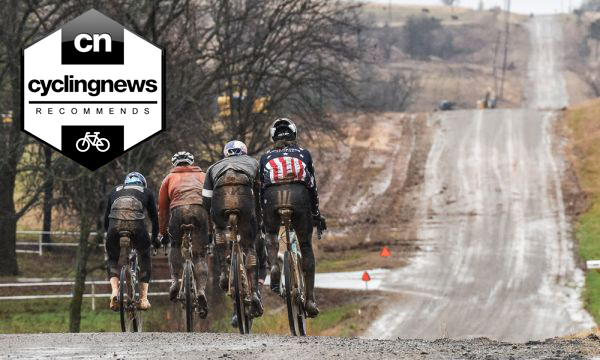How to prepare for your first gravel race
As gravel racing becomes a more competitive discipline, more and more cyclists are looking to tailor their training plans to succeed off the beaten path. Here's everything you need to know about training for your first gravel race

The distance and difficulty of your chosen event and your current levels of fitness will alter the exact approach you need to take, but the best practice for an event-specific training plan is to begin at least 12 weeks prior to standing on the start line. This will enable you to develop a structured training plan in accordance with the demands of the specific event you have chosen.
If you're using a coach, discuss the key elements of the race (distance, elevation gain, terrain type) with them and then develop your training plan accordingly. Any reputable coach will be able to modify your training plan according to your training availability and needs.
If you don't have a coach, there's no need to worry as we've already covered a few training plan options in a previous series of articles.
Your training plan should include at least three phases:
- A base phase (general preparation)
- A threshold phase (specific preparation)
- A peak phase (high-intensity intervals)
During the base phase, your focus is on spending more hours in the saddle, including some strength drills as well as off-the-bike strength workouts.
During the threshold phase, the total volume of training is reduced, with the introduction of longer intervals (8-20 minutes) at or around the functional threshold power (FTP).
The peak phase is the final phase in preparation for racing and includes reducing your volume and increasing your intensity with high-intensity interval (HIIT) sessions, ending with a short taper before race day.
Get The Leadout Newsletter
The latest race content, interviews, features, reviews and expert buying guides, direct to your inbox!
A simple, yet effective approach to building your own training plan can be outlined as follows:
Each training cycle should last between 12-16 weeks. This is called the 'macrocycle' and should conclude with the key target race. Having macrocycles of this length will allow you to target several events in a year while benefitting from the lasting residual effect of the cumulative training.
Each macrocycle should be divided into three or four four-week blocks (three blocks for 12 weeks, four blocks for 16 weeks). This is termed the 'mesocycle' and generally consists of three weeks of training followed by a recovery week. Mesocycles are kept short to ensure the training does not become too monotonous as well as optimise the residual effect.
Each block should include a high concentration of training sessions targeting similar training adaptations. You should have two high-intensity or specific training sessions per week with sufficient recovery (two to three days) between these sessions.
1. Maximise your training time
One of the best ways to maximise your training time is to take your training indoors. The single biggest benefit of training indoors is time efficiency. An indoor trainer or smart bike allows us to fit more quality work into a shorter time, which is a major positive for the time-constrained individual. When indoors, every second of your training session is spent placing the exact desired force and workload through your pedals. Compare this to a ride outdoors where as much as 30 to 40 per cent of the time can be spent without producing any power or freewheeling.
As we'll get to on point three, you don't want to completely avoid training outdoors, though. When doing so, plan your rides accordingly to ensure you have sufficient time to fit your interval sessions in, or use them for recovery rides and skills work. Pick a route that will give you the best ability to replicate some of the efforts you may need to make come race day.
2. Consistency is king
The most important element of training is without a doubt consistency. Being consistent in terms of your frequency of workouts as well as adherence to the workout format will lead to greater improvements in performance. Following a well-structured training plan that is designed accordingly to your specific lifestyle will allow you to be consistent and improve your performance.
3. Include handling and skills training
Whether you're used to riding off- or on-road, a change to a gravel bike will bring with it some new challenges. Spend time riding terrain similar to what you may encounter come race day. As Geoff Kabush showed, a gravel race can be turned on its head with superior bike handling.
The more you ride off-road in preparation for your event the more comfortable you'll be come race day.
For those new to the gravel riding phenomenon, it may be worth considering some basic skills clinics. Most skills coaches are highly experienced riders with great knowledge and phenomenal bike handling. A handful of sessions with a good skills coach can take your first gravel race from a bumpy nightmare to an enjoyable experience. Many of these skills coaches can be recommended by your local cycling club or found online with a quick internet search.
If a skills clinic is out of the question, use your recovery rides to practice skills you're likely to need, such as dismounting and mounting, line choice and bunny hopping obstacles.
4. Ride your race bike
While we all enjoy riding multiple bikes, the geometry of each bike is most likely different, altering your riding position. Riding the bike you plan to race on will help familiarise your body and muscles come race day.
Performing your key interval sessions on your race bike is greatly important so that you can become accustomed to your position. This may help you to resolve any aches or niggles that could be related to your bike fitment before the big day arrives
5. Race day nutrition
You need to aim at consuming 60-90 grams of carbohydrates per hour for races lasting longer than two hours. These can be consumed in the form of bars, gels, an electrolyte drink or a combination of the above.
Remember, like your legs and aerobic system, your gut also needs to be trained to help avoid gastrointestinal distress come race day. It's vitally important that you use the same cycling nutrition products consumed during training come race day to ensure optimum performance on the bike.
Jarred Salzwedel completed his Honours degree in Sports Science at the Nelson Mandela Metropolitan University in 2013. His Master's degree focused on investigating training adaptations to differing high-intensity interval training programmes in cyclists.
He has raced both on the road and track at a National level in the Junior ranks which led to his interest in the science behind training and conditioning, as well as his passion to help athletes optimise their performance.
Jarred owns and manages Cycle Dynamic Coaching - a coaching platform that looks after and advises some of South Africa’s top Road and Track cyclists. He has extensive knowledge in exercise physiology having previously focused on the physiological testing of endurance athletes.
